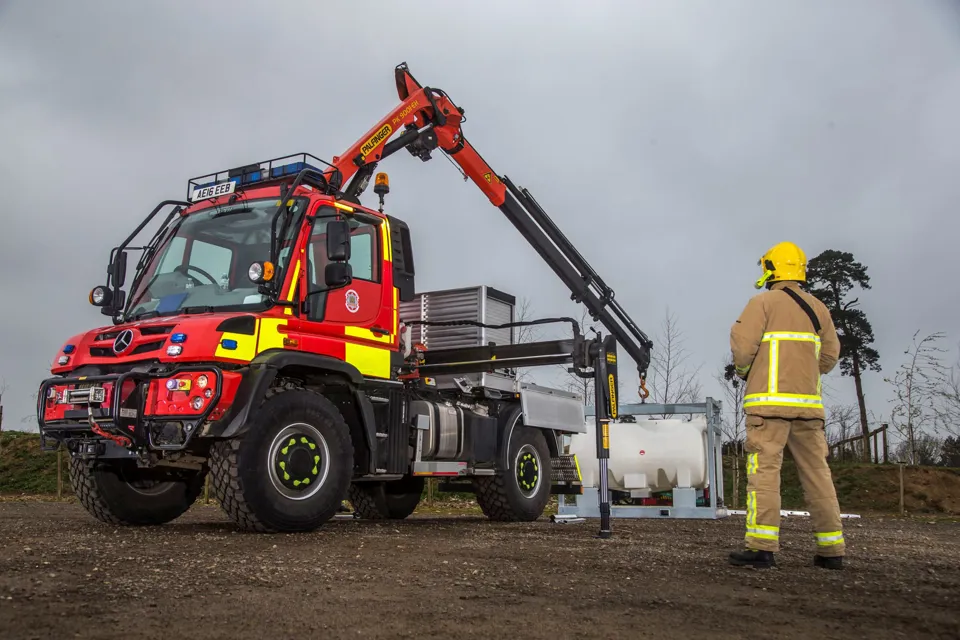Fire chiefs in Suffolk have enhanced their ability to deal with a wide variety of incidents in difficult-to-access locations by commissioning three all-terrain Mercedes-Benz Unimogs.
Suffolk Fire and Rescue Service’s 14-tonne U423s are based in Ipswich, Bury St Edmunds, and Lowestoft. They have replaced the Unimogs on which the authority had relied for more than 30 years to undertake large animal rescues and fight fires on heaths and scrubland.
Neil Elmy, fleet and equipment manager for Suffolk Fire and Rescue, explained: “Our previous vehicles gave outstanding service but we’d reached the point at which we needed to update them with modern, well-engineered equipment which would enhance firefighter safety. If that new equipment could also maximise the authority’s return on its investment by offering additional, enhanced capabilities, so much the better.”
Supplied by Arthur Ibbett, of St Neots, Cambridgeshire, a Unimog dealer since 1971, the new 4x4 chassis are powered by advanced 170 kW (231 hp) Euro VI engines. They are fitted with dropside bodies by Guildford-based fire engine specialist John Dennis Coachbuilders, Palfinger PK 9001-EH high performance cranes supplied and fitted by TH White, of Devizes, Wiltshire, and 6.0-tonne Bushey Hall winches.
The cranes are used primarily to rescue horses and other large animals that have become trapped in water or other hazards, with equipment such as strops, harnesses and skid boards, which is carried in a dedicated locker.
They also lift mission-specific demountable ‘pods’ on and off the vehicles. One, a ‘rescue pod’, contains an inventory for use by Suffolk’s swift water rescue teams – as an extension to the Unimog’s role, the new vehicles also tow rigid inflatable boats (RIBs). A second pod is a 1,500-litre water tank with pump and hose reel.
Removal of the pods means the deck can be used to transport vital equipment which can be used, for example, when responding to train or aircraft crashes that may occur at inaccessible locations.
“The Unimog is not cheap but it is actually a highly cost-effective piece of equipment,” concluded Elmy. “An unrivalled combination of all-terrain performance, agility and adaptability makes it the perfect platform for a variety of applications and means that in our case it does the job of several different vehicles rolled into one.”
The off-road heritage of the iconic Unimog stretches back more than 70 years. Since the first model was launched in 1946, constant development by Mercedes-Benz engineers has kept it at the forefront of the off-road pack and today it is widely acknowledged as the world’s leading all-terrain vehicle, with a reputation forged in the harshest operating conditions.
There are two core variants: an implement carrier – as chosen by Suffolk Fire and Rescue – with front, side and rear attachment points, and a base truck for a range of other bodies. All Unimogs have 4x4 chassis with single rear wheels, which follow the track created by the front wheels. Gross weights vary from 7.5 to 16 tonnes and engine outputs from 156 hp to 300 hp.
















Login to comment
Comments
No comments have been made yet.